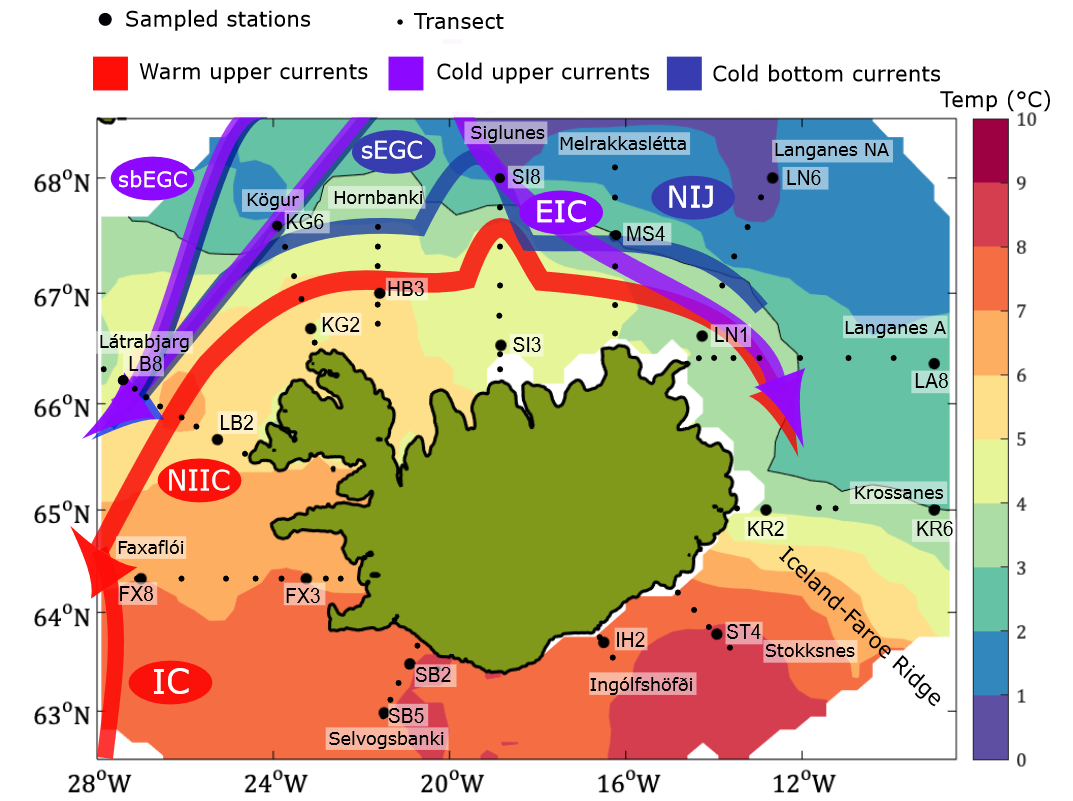 Map of samples around Iceland, use for metabarcoding.
Map of samples around Iceland, use for metabarcoding.
The distribution and diversity of eukaryotic phytoplankton in the Icelandic marine environment
Abstract
Phytoplankton play a crucial role in the marine food web and are sensitive indicators of environmental change. Iceland is at the center of a contrasting hydrography, with cold Arctic water coming in from the north and warmer Atlantic water from the south, making this geographical location very sensitive to climate change. We used DNA metabarcoding to determine the biogeography of phytoplankton in this area of accelerating change. Seawater samples were collected in spring (2012–2018), summer (2017) and winter (2018) together with corresponding physico-chemical metadata around Iceland. Amplicon sequencing of the V4 region of the 18S rRNA gene indicates that eukaryotic phytoplankton community composition is different between the northern and southern water masses, with some genera completely absent from Polar Water masses. Emiliania was more dominant in the Atlantic-influenced waters and in summer, and Phaeocystis was more dominant in the colder, northern waters and in winter. The Chlorophyta picophytoplankton genus, Micromonas, was similarly dominant to the dominant diatom genus, Chaetoceros. This study presents an extensive dataset which can be linked with other 18s rRNA datasets for further investigation into the diversity and biogeography of marine protists in the North Atlantic.